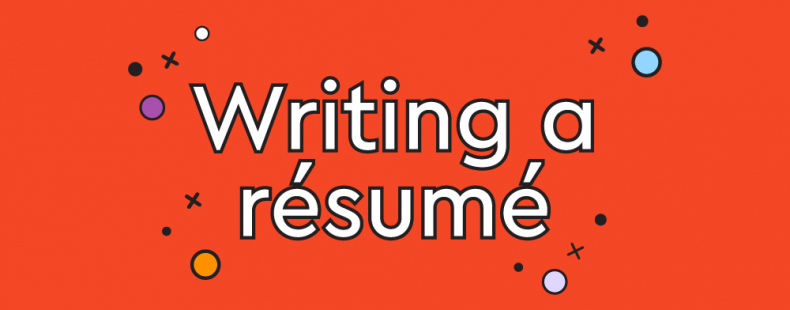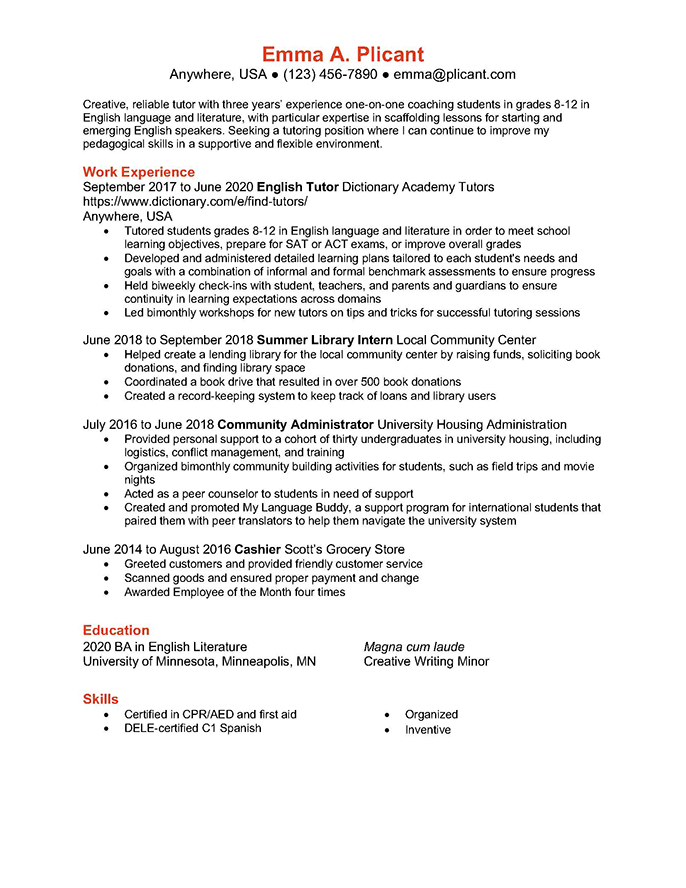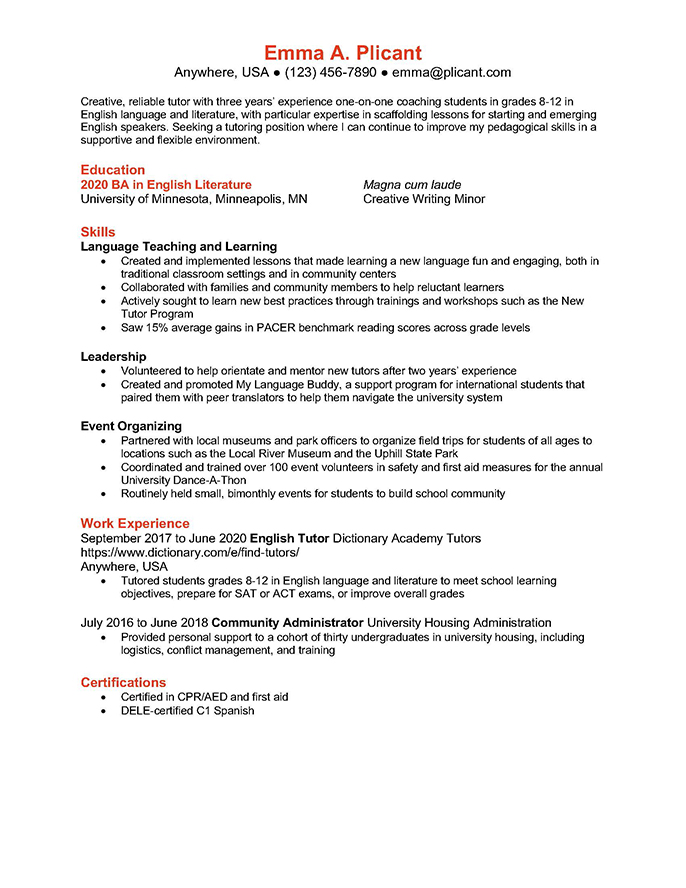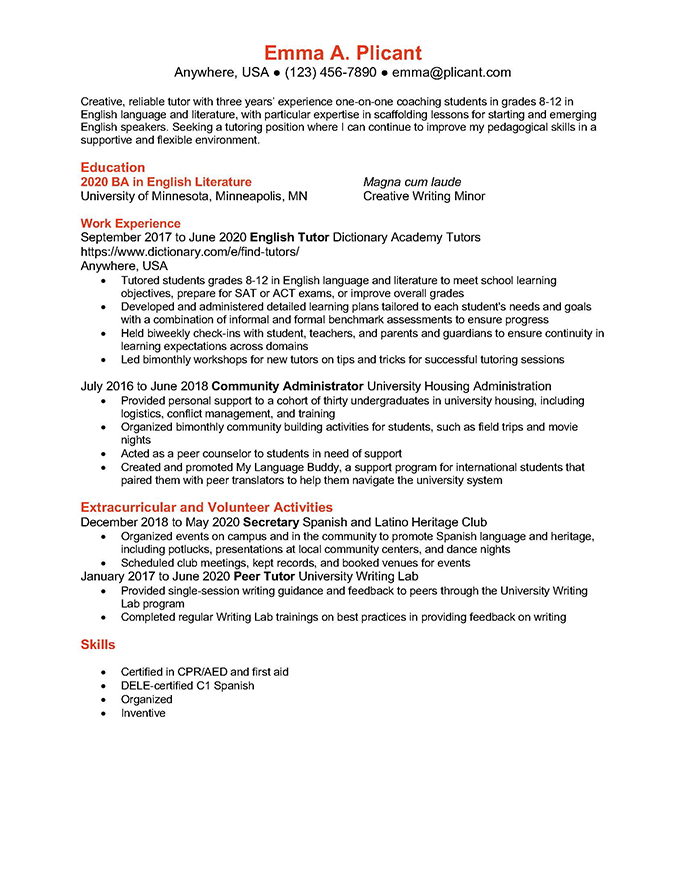A resume is often a short document, but it needs to pack in a lot of information. Many employers today use special technology to analyze resumes before a person even looks at it. That means every word or design element is important.
To help you, we’ve created the ultimate 10-step guide to writing a strong resume, from choosing a format to writing each section of the document. Every resume is slightly different depending on the field and personal experience, but there are some general guidelines that everyone should keep in mind when writing a resume.
You’ll start here with an overview of the process and then follow steps 1 through 10 that will address many of the specific questions you probably have related to producing a professional resume. Feel free to skip down to the list of steps below and click on the parts of the process that feel most applicable to you.
What is a resume?
A resume is a brief written account of personal, educational, and professional qualifications and experience. Resume is also commonly written as résumé (it comes from the French for “summary”); we will be using the simplified resume throughout this piece.
A resume typically includes a variety of personal information, from job experience to education to objectives and skills. It’s essentially a snapshot of who you are and why you would be a good fit for the job. A polished resume is one of the most important components of a job application. It is the first impression of you a potential employer will have.
Read more about the differences between resume and résumé here.
Resume vs. CV
Another form of job summary is the CV or curriculum vitae, which is a detailed account of one’s work experience, professional training, and educational background. A CV differs from a resume in that a CV is typically much longer, lists every job experience instead of just relevant ones, and gives more detailed explanations of each experience. CVs are more common in the United Kingdom as compared to the United States. They are particularly found in academic settings, as professors are often asked to list all of their publications. We are going to focus on how to write a resume rather than a CV.
As a final note, some organizations use the terms resume and CV interchangeably. If you’re uncertain about what they are specifically looking for, contact the organization doing the hiring directly to ask.
How long should a resume be?
Because it is a summary of your work experience, a resume is typically only one page long. If you have a lot of experience, you will have to think carefully about how to make it all fit. That said, a 2018 study suggested that two-page resumes are becoming more acceptable. A good general guideline is that if you have 5–10 years of experience in a field, you may choose to stretch your resume to two pages. If you don’t have enough to fill up a whole second page, though, tweak the design until you can make it all fit onto one page.
Ever wonder what the difference is between a resume and CV? Read this article to find out.
We’ve provided three sample resumes you can use to follow along in this series and create your own format. There are three templates linked here (click on the images below to expand them), but each format is explained in more detail in “Step 1. Choose a Resume Format”:
Resume examples
- the chronological resume
- the functional resume
- the combination resume
10 steps to writing a great resume
Creating a resume is a complex process, and we’re going to devote a series of articles to making sure we cover the ins and outs of each step along the way. While several of the steps are grouped in one article, you can use the list below to choose the articles most relevant to your resume.
Step 1. Choose a Resume Format
Step 2. Include Appropriate Contact Information
Step 3. Write a Stellar Objective
Step 4. Highlight Relevant Experience
Step 5. Add Relevant Skills to Your Resume
Step 6. Include an Education Section
Step 7. List Certifications and Awards
Step 8. Incorporate Action Verbs, Adjectives, and Other Buzzwords
Step 9. Edit Your Resume
Step 10. Share Your Resume
Along the way, we’ll also share our excellent recommendations via this bonus content:
- CV vs. Resume: What Are The Differences?
- Hard & Soft Skills To Include On A Resume
- Add Professional Pizazz To Your Resume With These Adjectives
- Take Your Résumé to the Next Level With These Action Verbs
Are you ready to begin? Let’s start with choosing the best format for your resume!















